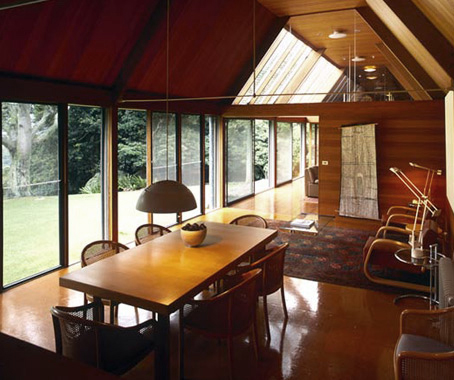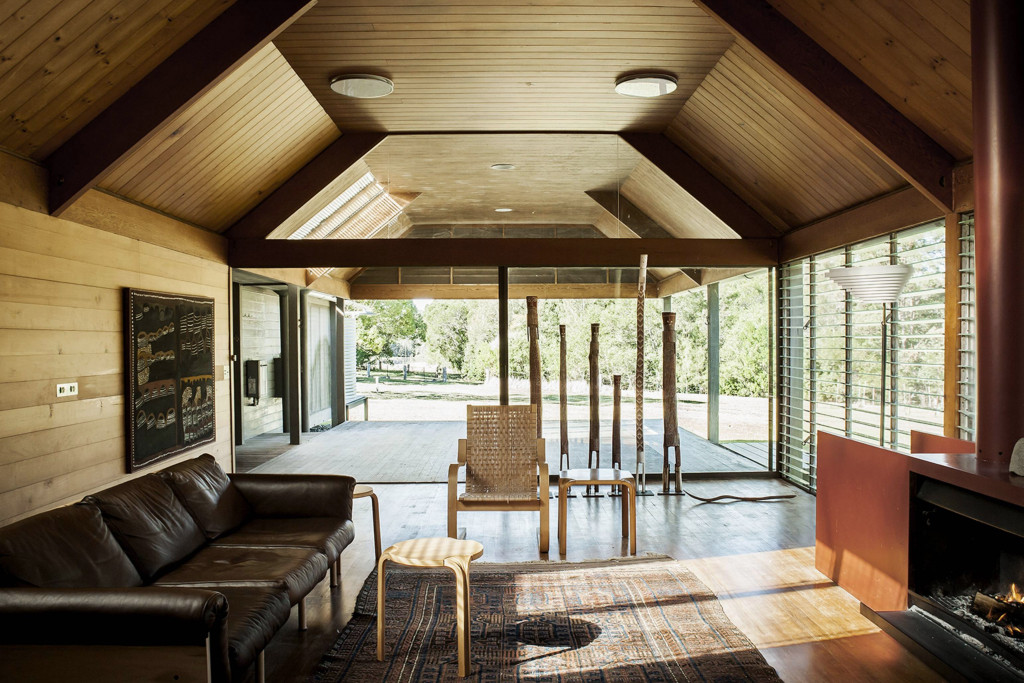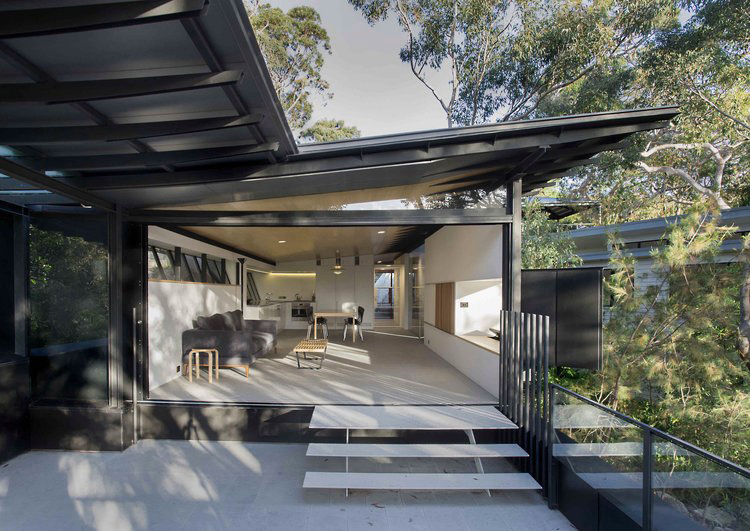Glenn Murcutt is one of the most praised architects within recent memory, famous for his inventive and sustainable designs. His work represents a profound comprehension of the Australian landscape and climate, and his obligation to ecological cognizance has roused architects all over the planet.
Setting the stage for Glenn Murcutt’s significance
Murcutt’s importance lies in his exceptional way to deal with engineering, which focuses on agreement with nature, sustainability, and effortlessness. His plans are in many cases described by their utilization of lightweight materials, open floor plans, and normal ventilation. Murcutt’s work has additionally been lauded for its aversion to the Australian landscape and climate.
A brief glimpse into his extraordinary career
Murcutt was brought into the world in London in 1936 and emigrated to Australia with his family soon after. He concentrated on architecture at the University of New South Wales, graduating in 1961. In the wake of working for a few different modelers, Murcutt laid out his own training in 1970.
Murcutt’s initial work centered around private plan, and he immediately acquired a standing for his inventive and sustainable approach. In 1982, he finished the Magney House, which is presently viewed as one of the most notorious instances of Australian design. The Magney House is a demonstration of Murcutt’s obligation to planning structures that orchestrate with nature and the climate.
Murcutt’s work has been perceived with various honors and awards, incorporating the Pritzker Prize in 2002. He is the main Australian designer to have gotten the Pritzker Prize, which is viewed as the most noteworthy distinction in engineering.

Early Life and Influences – Glenn Murcutt
Discovering Murcutt’s roots and formative years
Murcutt was born in London in 1936. He moved into Australia together with family members shortly thereafter. Murcutt grew up in Sydney as a child and enjoyed his youth exploring the Australian bush. The early experiences of Murcutt with nature been a major influence on his architectural thinking.
The key influences that shaped his architectural vision
Murcutt’s architectural vision has been shaped by a number of key influences, including:
- The Australian landscape and climate: Murcutt’s designs are deeply informed by his understanding of the Australian landscape and climate. He believes that architecture should be in harmony with nature, and his buildings often reflect the unique features of the Australian environment.
- Sustainability: Murcutt is a passionate advocate for sustainability, and his designs are always informed by environmental considerations. He uses sustainable materials and construction methods, and his buildings are designed to minimize their impact on the environment.
- Simplicity: Murcutt’s designs are characterized by their simplicity and elegance. He believes that architecture should be functional and efficient, and he avoids unnecessary ornamentation.
Architectural Philosophy – Glenn Murcutt
Delving into Murcutt’s unique approach to architecture
Murcutt’s architectural philosophy is based on the following key principles:
- Harmony with nature: Murcutt believes that architecture should be in harmony with nature. He designs buildings that are sensitive to the landscape and climate, and he often uses natural materials and ventilation in his work.
- Sustainability: Murcutt is committed to sustainable architecture. He uses sustainable materials and construction methods, and his buildings are designed to minimize their impact on the environment.
- Simplicity: Murcutt’s designs are characterized by their simplicity and elegance. He believes that architecture should be functional and efficient, and he avoids unnecessary ornamentation.
Emphasizing environmental consciousness and sustainability
Sustainability is a core principle of Murcutt’s architectural philosophy. It is his belief that architects have a duty to design buildings that limit their environmental impact. Murcutt’s designs include several sustainable features. number of sustainable elements that are sustainable, such as:
- Natural materials are used: Murcutt frequently uses natural materials like stone and wood in his designs. These substances are environmentally sustainable since they are renewable and have a minimal environmental impact.
- Passive design: Murcutt’s designs are often based on passive design principles. Detached plan utilizes normal components, like daylight and wind, to intensity, cool, and ventilate structures. This lessens the requirement for energy-concentrated mechanical frameworks.
- Water conservation: Murcutt’s designs are also designed to conserve water. He uses rainwater harvesting systems and water-efficient fixtures in his buildings.
Pritzker Prize Laureate – Glenn Murcutt
An in-depth look at Murcutt’s prestigious recognition
The year 2002 was the time that Murcutt received his Pritzker Prize, which is considered to be the top honor in architecture. The Pritzker Prize jury praised Murcutt’s work for its “deep reverence towards the Australian landscape as well as its sustainable principles and its dedication for simplicity.” The Pritzker Prize revolutionized Murcutt’s life by the way it exposed Murcutt’s work to a worldwide public. It also led to a new generation architect to emulate his example in the design of green and sustainable structures.
Iconic Works: Marika-Alderton House
Analyzing the design and significance of this masterpiece
The Marika-Alderton House is one of Murcutt’s most iconic works. The house of Marika Alderton is one of Murcutt’s most famous pieces. It is situated in the remote Aboriginal village in Arnhem Land in Northern Australia. The house was created in concert with Marika family. It is a reflection of their culture and life style. The Marika-Alderton House is significant because it is a successful example of sustainable architecture in a challenging environment. It is also a testament to Murcutt’s commitment to working with Indigenous communities.
How this project reflects Murcutt’s design principles
The Marika-Alderton House reflects Murcutt’s design principles in a number of ways. The house is in harmony with the natural environment, using lightweight materials and open spaces to maximize airflow and natural light. The house is also sustainable, using rainwater harvesting and solar power to reduce its environmental impact. Finally, the house is simple and elegant, reflecting Murcutt’s belief that architecture should be functional and efficient.
Iconic Works: Simpson-Lee House
Exploring another gem in Murcutt’s portfolio
Another iconic work in Murcutt’s portfolio is the Simpson-Lee House. The home is situated in an area of rural beauty in New South Wales, Australia. The Simpson-Lee Home is an extremely light, high-altitude structure which is created to minimize any impact it has on surrounding landscape. The house is developed out of creased iron and wood, and glass.
It accompanies it has various special highlights, similar to the rooftop’s slant to gather water, as well as a limitlessness pool that is intended to assist with chilling off the home. The Simpson Lee House is significant due to the fact that it is the first instance for sustainable architectural design in Australia. It is an example of Murcutt’s capacity to design structures that are equally functional and attractive.
Highlighting the innovative features of the Simpson-Lee House
Some of the innovative features of the Simpson-Lee House include:
- A tilting roof: The roof of the Simpson-Lee House tilts to collect rainwater. This rainwater is then stored in tanks and used for drinking, irrigation, and flushing toilets.
- A swimming pool: The swimming pool of the Simpson-Lee House is used to cool the house. The pool is located on the roof of the house, and it shades the interior from the sun.
- Natural ventilation: The Simpson-Lee House is designed to maximize natural ventilation. This reduces the need for energy-intensive mechanical cooling systems.
Iconic Works: The Magney House
A closer look at the architectural marvel by Glenn Murcutt
The Magney House is one of Murcutt’s most iconic and celebrated works. It is situated in a country setting on the bank of New South Wales, Australia. The Magney House is a lightweight, raised structure that is intended to blend with the common habitat.
The house is made of layered iron, lumber, and glass. It includes various imaginative highlights, for example, an Angular rooftop that gathers water and a framework that utilizes normal convection to cool the house.
The Magney House is significant because it is a groundbreaking example of sustainable architecture. It is also a testament to Murcutt’s mastery of design and construction.
The integration of nature and design in the Magney House
The Magney House is a masterpiece of integration of nature and design. The house is arranged on a ridge sitting above the sea, and its plan mirrors the encompassing scene. The house is likewise intended to boost regular light and ventilation.
The Magney House features a number of innovative features that integrate nature and design, such as:
A V-shaped roof:* The V-shaped roof of the Magney House gathers rain water and guides it into tanks for capacity and use. The rooftop likewise gives shade and insurance from the components.
- A system that utilizes regular convection to cool the house: The Magney House utilizes an arrangement of regular convection to cool the house. The system works by drawing in cool air from below the house and expelling hot air from above. This system reduces the need for energy-intensive mechanical cooling systems.
- Large windows: The Magney House features large windows that allow natural light to flood the interior. The windows also provide stunning views of the surrounding landscape.
- Verandas: The Magney House features verandas on all sides. The verandas provide shade and protection from the elements, while also allowing for outdoor living and dining.
The Magney House is a testament to Murcutt’s commitment to designing buildings that are in harmony with nature. The house is a beautiful and sustainable example of Australian architecture.

Conclusion
A final reflection on Glenn Murcutt’s remarkable journey
Glenn Murcutt is a remarkable architect who has made a significant contribution to the field of architecture. His work is characterized by its sustainability, harmony with nature, and simplicity. Murcutt is likewise an enthusiastic instructor and coach who has formed the up and coming age of modelers.
Murcutt’s journey is one of motivation and trust. He has shown us that planning delightful and reasonable structures, even despite challenges is conceivable. Murcutt’s work is a demonstration of the force of design to have a beneficial outcome on the world.
Encouraging readers to explore his work and legacy
I encourage all readers to explore Glenn Murcutt’s work and legacy. His work is a wellspring of motivation and expectation for designers and non-modelers the same. Murcutt’s work shows us that conceivable to plan structures are both delightful and manageable.
FAQs
Who is Glenn Murcutt, and for what reason would he say he is well known in the realm of architecture?
Glenn Murcutt is an Australian architect who acquired distinction for his creative and practical building plans. He is known for his capacity to fit design with the common habitat, making structures that are useful as well as ecologically dependable. His work frequently obscures the line among indoor and outside spaces, offering an interesting and vivid experience.
What is unique about Glenn Murcutt’s design philosophy?
One of the particular parts of Murcutt’s plan reasoning is his devotion to making structures that are as one with the climate. He accepts that engineering ought to supplement the regular world instead of overwhelm it. His plans are in many cases portrayed by their effortlessness, adaptability, and responsiveness to the environmental factors.

